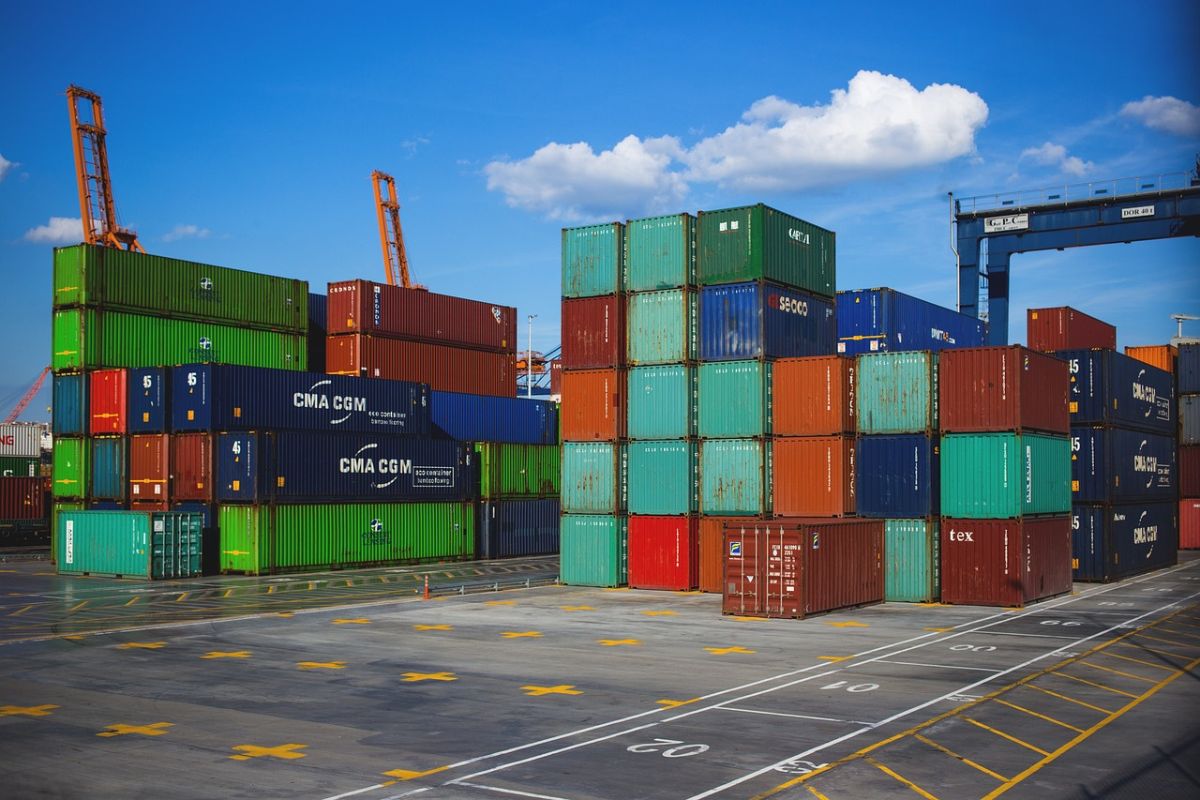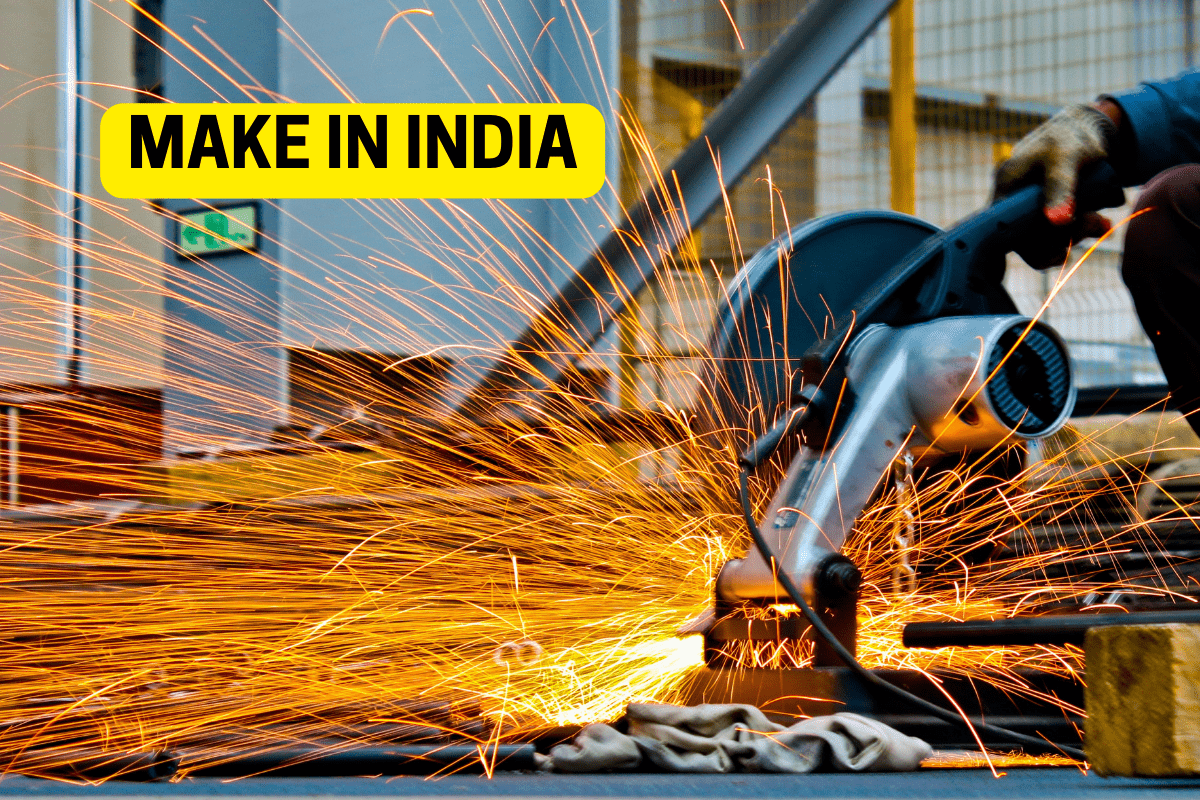Make In India – An Overview
Soon after forming a new government, Prime Minister Modi announced the “Make in India” programme, which is actually Manufacturing in India. It has become the Indian Government’s flagship programme to attract domestic and international investors to set up manufacturing facilities in India.
For a very long time, since 2000, the Indian Government has focused entirely on the services sector, especially the ICT and related sectors. Policies, incentives and priorities were focused on the technology sector and this resulted in the neglect of manufacturing in India. At the same time, China pushed and prioritised manufacturing with the aim of becoming the global hub for manufacturing. China’s focus on low-cost manufacturing became very popular with investors across the world and huge investments flowed into China boosting its economic growth. India, on the other hand, relied on technology services at the cost of manufacturing and fell behind China.
The objective of the Indian Government was to set this anomaly right and bring back investment into the manufacturing sectors and encourage high-tech manufacturing industries to set up in India to help boost the economy and generate employment for the skilled, semi-skilled and unskilled labour.
The flagship programme of Make in India was announced with the objective of not only attracting investments into manufacturing but also ensuring simultaneous development of much-needed infrastructure, creating an environment for start-ups and innovation, improving skills training, creating an environment that will be conducive to manufacturing companies so that they could compete with China.
The Make in India initiative was spearheaded by the Department of Promotion of Industry and Internal Trade (DPIIT) under the Ministry of Commerce. The programme is based on four pillars, namely, New Processes, New Infrastructure, New Sectors and New Mindset. The Make in India programme was designed not just to attract investment into manufacturing but transform India’s economy into a modern, technology-oriented and future-focused country that would make it one of the largest economies in the world.
The Four Pillars
1. New Processes
This pillar of the Make in India programme is to bring in a number of reforms to the license and approval systems that have plagued India and bring in changes that will result in systems that will support the ease of doing business. De-regulation and simpler norms along with a single-window approval system is the main objective of this pillar. In short, this pillar is about bringing in ease of doing business.
2. New Infrastructure
For a very long time, India has suffered from poor-quality infrastructure. This in turn has affected manufacturing and has been a roadblock in attracting investments. This pillar aims to set right the problem India has been facing for generations by developing excellent infrastructure to cater to the needs of a modern manufacturing economy and upgrading current infrastructure. The aim is to modernize and provide high-quality logistics infrastructure.

3. New Sectors
One of the aims of Make in India is also to encourage manufacturing in emerging areas of high technology like Aerospace & Defence, Industry 4.0, Semi-Conductors, High-Tech Electronics, Automobiles, Electric Vehicles, New Materials and so on. The objective is to focus on modernising and upgrading the traditional sectors of manufacturing, and, at the same time, getting into newer areas of manufacturing. The Make in India programme identified 25 sectors that it aims to focus on.
4. New Mindset
The fourth pillar is to bring in a change within government with the objective to create an image of the various ministries as facilitators and not regulators. The Make in India programme wants to send a clear message to entrepreneurs and investors that it is a business-friendly government and is willing to do its best to support and encourage businesses and not control them.
Sectors
Make in India is looking to aggressively promote, support and help encourage 25 sectors in manufacturing. These sectors are a mix of traditional manufacturing and new and emerging areas. These sectors are:
Automobiles, Automobile Components, Aviation, Biotechnology, Chemicals, Construction, Defence Manufacturing, Electrical Machinery, Electronic Systems, Food Processing, IT & BPM, Leather, Media & Entertainment, Mining, Oil and Gas, Pharmaceuticals, Ports & Shipping, Railways, Renewable Energy, Roads & Highways, Space, Textile & Garments, Thermal Power, Tourism & Hospitality and Wellness.

The main objective of the Government of India is to attract FDI in manufacturing to India. With the current geopolitical and COVID-19-related problems, the Government hopes to attract new FDI and investments from companies that may be looking to spread their risks by lessening their dependence in countries like China and are looking for safer and more stable countries. There has been some success in this regard. FDI inflows in India stood at US $ 45.15 billion in 2014-2015 and have since consecutively reached record FDI inflows for 8 years. The year 2021-22 recorded the highest-ever FDI at $83.6 billion.
Production Linked Incentive
Another flagship scheme of the Indian Government to boost manufacturing in India is the Production Linked Incentive (PLI). This scheme was introduced across 14 key manufacturing sectors. It was launched in 2020-21 to give a big boost to the Make in India initiative. The PLI Scheme incentivises domestic production in strategic growth sectors where India has a comparative advantage. This includes strengthening domestic manufacturing, forming resilient supply chains, making Indian industries more competitive and boosting the export potential. The PLI Scheme is expected to generate significant gains for production and employment, with benefits extending to the MSME ecosystem.
Key Objectives of PLI Scheme
The PLI scheme was announced in March 2020 and the key objectives of the scheme are:
- Protect identified product areas
- Introduce non-tariff measures that make imports more expensive
- Acknowledge the relevance of exports in the overall growth strategy, with a renewed focus on the domestic market
- Promote domestic manufacturing by offering production incentives and encouraging capital investments
- Attract core knowledge competency and cutting-edge technologies
- Create economies of scale and ensure efficiencies
- Promote job generation and employment
- Construct district-level export hubs
- Reduce compliance burden
- Improve ease of doing business
- Cut down logistics costs
- Boost domestic manufacturing output by US$ 520 billion in five years
As a result, the scheme has been expanded to accommodate an additional 10 ‘sunrise’ sectors to boost the economy and India’s self-reliance, that are, Advance Chemistry Cell (ACC) Battery, Electronic and Technology Products, Automobiles and Auto Components, Pharmaceutical Drugs, Telecom and Networking Products, Textile Products (Man-made Fibres and Technical Fibres), Food Products, High-efficiency Solar PV Modules, White Goods (ACs and LEDs) and Specialty Steel Products.
PM Gati Shakti – National Master Plan for Multi-Modal Logistics
The third scheme to boost manufacturing in India is to improve the logistics infrastructure across the country and connect the infrastructure to the various economic zones. This scheme is called the Prime Minister’s National Gati Shakti Master Plan (PMGS-NMP). This scheme was launched on 13th October 2021 for providing multimodal connectivity infrastructure to various economic zones. The PMGS – NMP envisions the transformation of the Indian economy by building high-quality logistics infrastructure to support economic activity, especially along the economic corridors that are being developed across the country.
The approach is primarily focused on the following seven areas – Railways, Roads, Ports, Waterways, Airports, Mass Transport, and Logistics Infrastructure.

The PMGS – NMP scheme’s focus on modernizing the logistics infrastructure throughout the country and creating connectivity to economic zones will help manufacturing industries to transport and ship their goods much faster and in an economical way. This will help the manufacturing companies to cater to domestic and global demand in a much more efficient way and save them costs. At the same time, it will help companies that import machinery and capital goods to expand their manufacturing facilities. It will also include the infrastructure developed by the State Governments.
India – A Manufacturing Hub
The Government of India is keen to promote India as a global manufacturing hub. Though it cannot compete with China, especially in terms of infrastructure and costs, India would like to develop as an alternative to China by making it easier to do business in India. The three schemes mentioned above are the first steps in this direction. The first scheme, Make in India will concentrate on ease of doing business and aiming to attract FDI into manufacturing.
The second scheme, the Production Linked Incentive plans to provide financial incentives and subsidies to large manufacturing companies in specified areas, especially those that the Indian Government wishes to promote in a big way.
The third scheme, the Prime Minister’s Gati Shakti National Master Plan aims to modernize India’s logistics infrastructure which in turn will help manufacturing companies to smoothly transport their products not just within India but also across the globe.

Given the turmoil the world has seen in the last three years due to COVID restrictions and other geopolitical developments, it has become imperative for multinational companies to avoid putting all their eggs in one basket. These companies are now looking for alternatives where they can establish their businesses in a cost-effective manner and without any serious disruptions to their activities. Already, many large companies have either shifted production or are expanding their facilities outside of China. India, Vietnam and the Philippines have benefited from these moves. Perhaps India can attract a large chunk of investment that is looking for stabler environments through the effective and speedier implementation of the schemes envisioned in the Make in India programme.
About the Author
 |
VIJAY KUMAR VADDADI, India Entry & International Affairs
Mr. Vijay Kumar is an Industrial Economist with 35+ years of experience in Economic Analysis, Trade & Investment Promotion, International Business Strategy & Cross-Cultural Impact. A Post-Graduate in Economics with specialization in Industrial Economics and Economics of Transportation, Public Utilities & Social Infrastructure from the University of Bombay (1982). In 1984, he joined the Consulate General of the Netherlands in Mumbai as an Economic & Commercial Officer and continued his association with the Netherlands Government (NBSO) for over 30 years. At SAS Partners, he heads the Trade and Investment Promotion activities, supports organising programmes for international business delegations, curates knowledge reports, and market studies and also helps our international clients in understanding the Indian business landscape better. |



